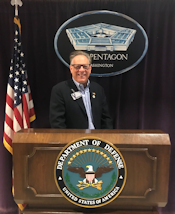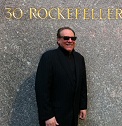NanoBusiness DC Roundtable, Mar.15-17th – Tomorrow’s Nanoscience Leaders
Posted on January 15th, 2010 | No Comments »
With The Martin Luther King weekend Holiday upon us I www.vincentcaprio.org was reading about the life of Dr. King. One quote from Dr. King which is apropos to our current state of affairs is the following.
“The ultimate measure of a man is not where he stands in moments of comfort and convenience, but where he stands at times of challenge and controversy.”
– Martin Luther King, Jr.
The NanoBusiness Alliance has been committed to innovation and keeping America competitive since our inception in 2001. Today, I would like to announce our 9th Annual Washington Roundtable which will be held March 15-17th. We will be in Washington DC starting Monday evening with a networking dinner and reception. Members please Email alisa@nanobusiness.org to register. To join the NanoBusiness Alliance please Email vince@nanobusiness.org to discuss.
The innovative products developed by our NanoBusiness Alliance members often begin as ideas in a research lab. Yesterday’s nanoscience discoveries drive today’s breakthrough nanotechnology. Over the next few months, we are going to try to sneak a peek at tomorrow’s technology by checking out what the scientists are working on right now.
I will be bringing you short profiles of nanoscientists working across the many different disciplines that contribute to the excitement of our field. Of course we will be highlighting some of the big names, but we are going to start on a different track – by featuring a group of highly distinguished younger scientists.
Last week I talked about the NanoBusiness Alliance’s Talent Program http://www.nanobusinesstalent.org/ for gifted high school students. The first group of nanoscientists we are going to look at are standouts a decade or more further down the career path, at the point where they are just beginning independent research careers. Each year, the White House asks U.S. R&D agencies to nominate young scientists whose pursuit of innovative research and commitment to community service are already apparent. From these nominees, the Office of Science and Technology Policy selects the winners of the Presidential Early Career Awards for Scientists and Engineers, or PECASE.
I was pleased to discover that nanotechnology has been on PECASE winner’s research agenda at least since 1999, when President Clinton honored Kathryn “Kam” Moler of Stanford University. Moler was nominated by the Department of Defense for her work in developing new experimental methods to probing magnetism on the nanoscale, and for using these new tools to study materials such as superconductors that have important uses in critical Air Force applications like high-power microwave sources.
In the decade since, Kam’s star has continued to rise. In addition to leading a very successful research group http://www.stanford.edu/group/moler/ utilizing local magnetic probes, she is now the director of the Center for Probing the Nanoscale http://www.stanford.edu/group/cpn/index.html, a National Science Foundation-funded center where Stanford and IBM scientists continue to improve scanning probe methods for measuring, imaging, and controlling nanoscale phenomena. Of course they have a great legacy from which to draw. Many people consider the invention of the scanning tunneling microscope – which brought IBM scientists Gerd Binnig and Heinrich Rohrer the 1986 Nobel Prize in Physics – a seminal event in the history of nanotechnology. Binnig and his longtime colleague Christoph Gerber, then based at IBM’s Zurich laboratory, spent 1986 visiting Stanford and IBM’s Almaden laboratory in San Jose. Their collaboration with Calvin Quate at Stanford led to the first and perhaps still most successful of the STM’s progeny, the Atomic Force Microscope.
We are going to take a look at one more recent PECASE recipient this week. Rashid Zia is an Assistant Professor of Engineering at Brown University and a member of the Institute for Molecular and Nanoscale Innovation http://www.brown.edu/Departments/IMNI/. His works on nanophotonics is supported by both NSF and the Air Force Office of Scientific Research. On AFOSR’s recommendation, he was honored among the 2008 PECASE winners. Rashid describes his work as melding an optical physicist’s interest in how light behaves in nanostructured materials with an electrical engineer’s desire to develop useful new devices. So he and his students model, build, and characterize subwavelength photonic devices, often based on rare-earth compounds. He says these plasmonic devices can combine the speed of optics with the nanoscale size we have come to expect in the electronics world. One of the group’s goals is to improve LED lighting and hasten our transition away from inefficient incandescent or mercury-containing fluorescent bulbs – a great example of my green, clean, and never seen theme for nanotechnology.
More PECASE stories will follow in the coming weeks, along with some profiles of other well-known nanoscientists. Please send me feedback on who you would like to see included. Who do you think are the rock stars of nanoscience? Please email your nominees to vince@nanobusiness.org.
Let’s take a moment on Dr. King’s birthday to commit to science and math education for the students of America.
Regards,
Vincent Caprio “It’s Green, It’s Clean, It’s Never Seen – That’s Nanotechnology”
www.vincentcaprio.org
Executive Director
NanoBusiness Alliance
vincentcaprio@nynanobusiness.org




